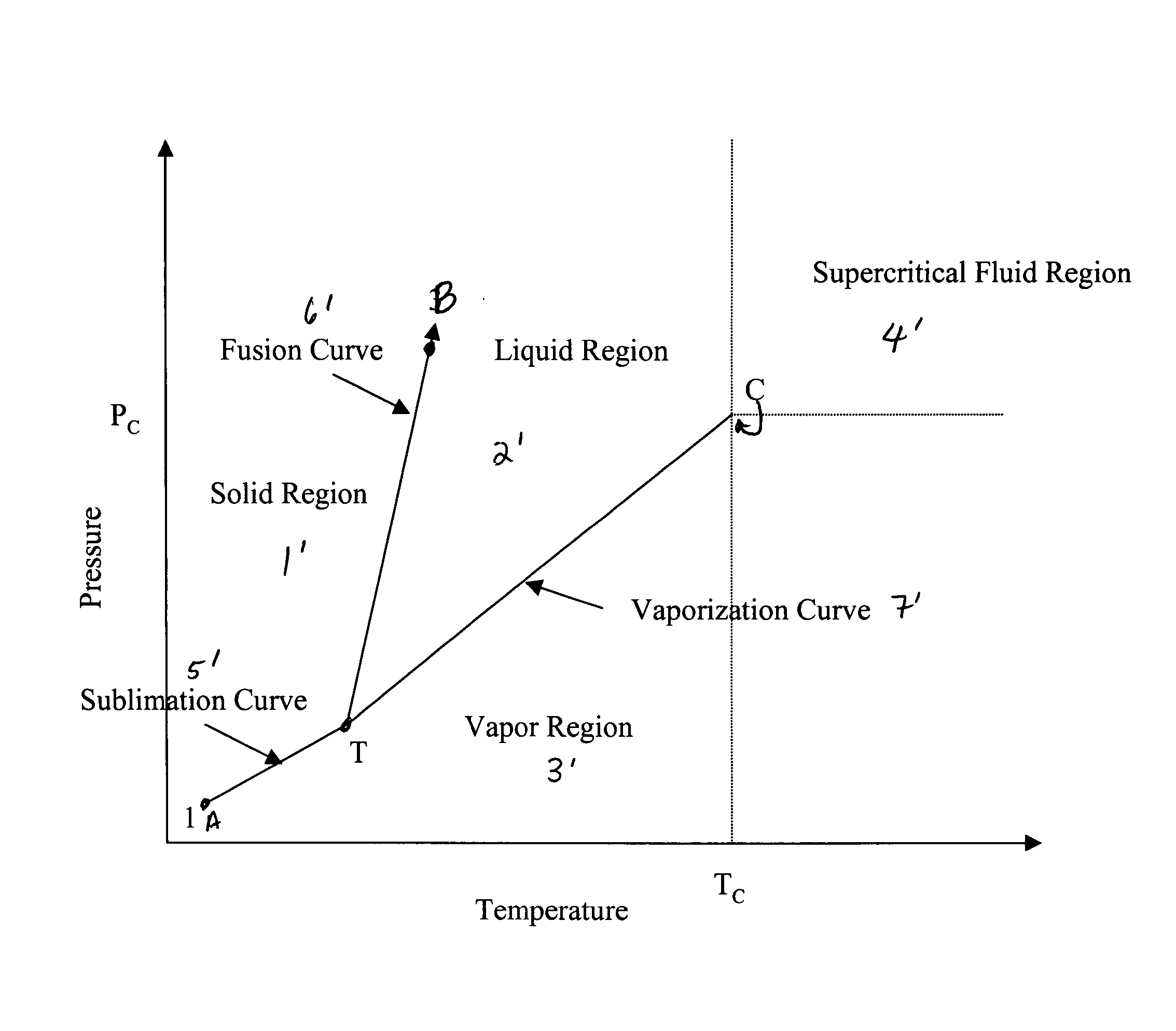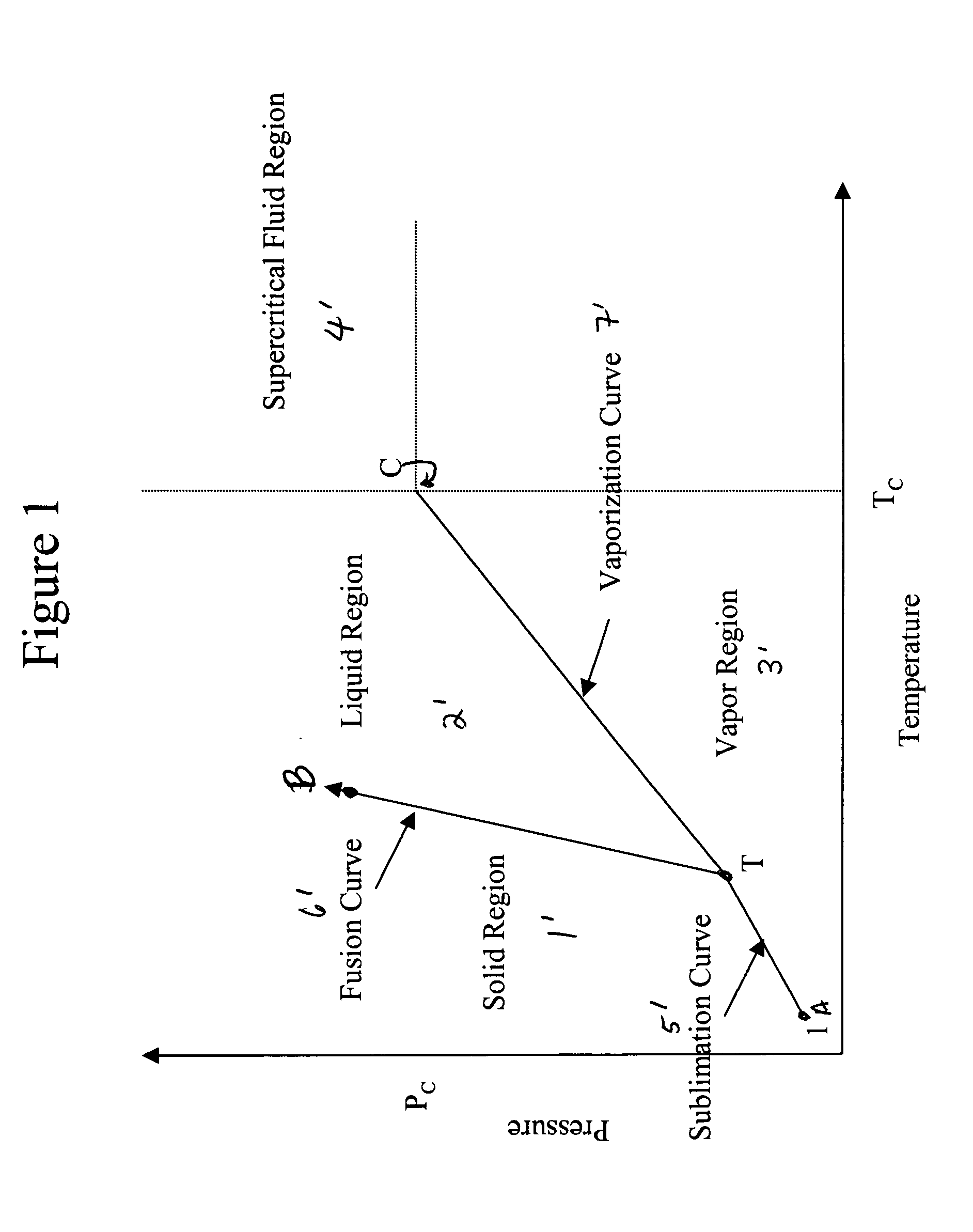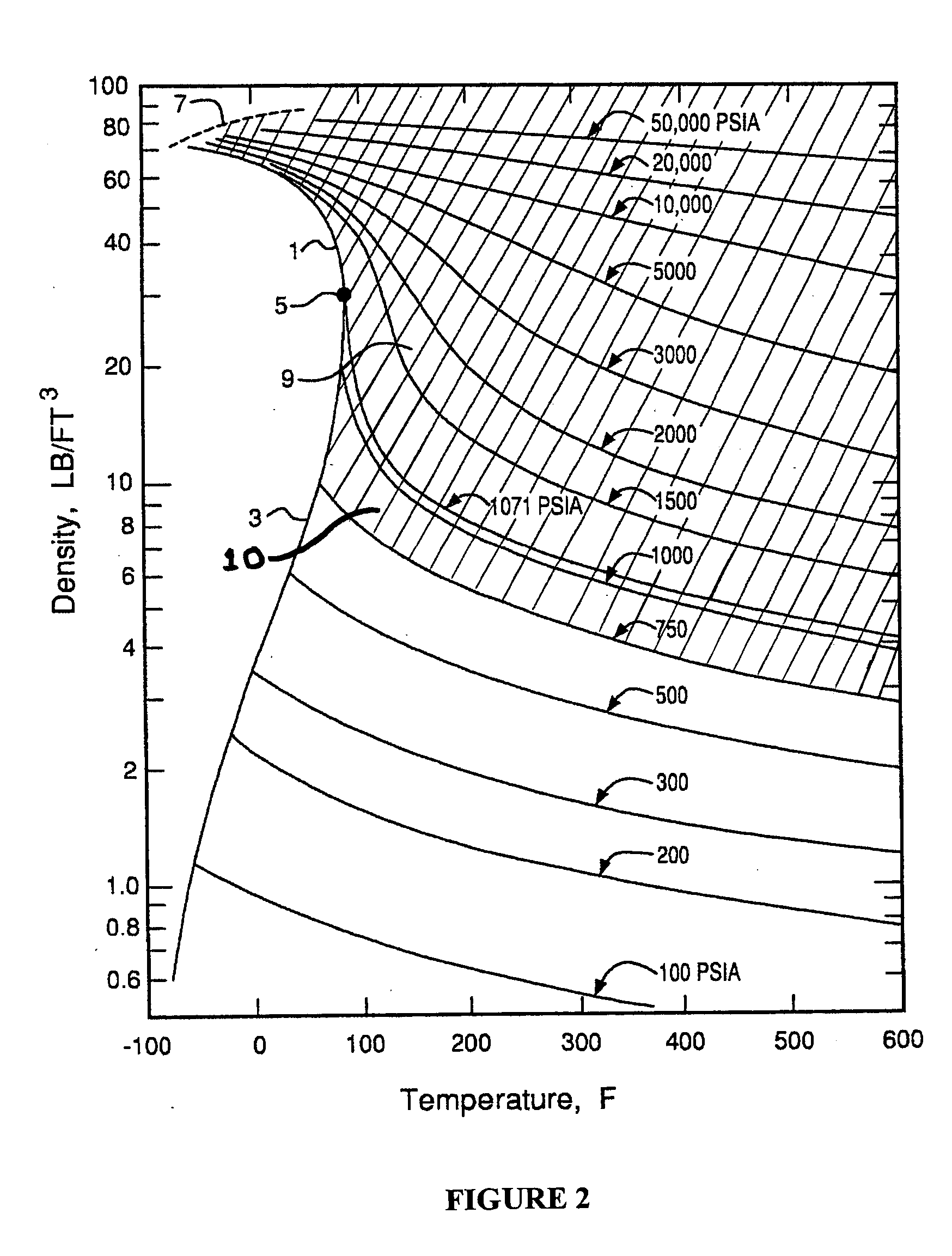Processing of semiconductor substrates with dense fluids comprising acetylenic diols and/or alcohols
a technology of acetylenic diols and dense fluids, applied in the direction of organic detergent compounding agents, detergent compositions, surface-active detergent compositions, etc., can solve the problems of increasing manufacturing costs, small contaminants, and reducing yields. significant, and the effect of small contaminants
- Summary
- Abstract
- Description
- Claims
- Application Information
AI Technical Summary
Problems solved by technology
Method used
Image
Examples
examples 1 through 12a
Solubility of Various Additives within a Dense Fluid
In the following examples, mixtures of entrainers such as acetylenic alcohols, acetylenic diols, co-solvents, and chelating agents with liquid / supercritical CO2 as the dense fluid were prepared by adding the one or more entrainers to a stainless steel variable volume high-pressure view cell equipped with suitable pressure relief devices, high-pressure inlet and outlet valves, a magnetic stirrer for agitating the mixture, pressure transducer, an internal thermocouple, and a sapphire window at one end. The cell is mounted horizontally and equipped with a heating / cooling jacket through which a cooling / heating fluid is circulated. A circulating bath was used to supply and pump the cooling / heating fluid to ensure isothermal (constant temperature) operation. The pressure in the cell was adjusted by changing the position of a piston. The moving piston was viewed through the sapphire window using a suitable optic device and the image was...
examples 13 through 18
Solubility of Acetylenic Alcohol and Diol-Based Mixtures in Liquid and Supercritical CO2
The process of Examples 1 through 12 is repeated using different mixtures of entrainers to determine the miscibility and solubility in liquid and supercritical CO2. The solubility results are shown in Table III. The results indicate that all mixtures except propionitrile-Dynol®604 (50 / 50) are soluble in liquid CO2. The results also indicate that the mixtures are soluble in supercritical CO2 (SC—CO2) at pressures less than 3400 psig (˜235 bar) at all temperatures. In many cases, the pressure required to dissolve an acetylenic alcohol or diol-based mixture in liquid or supercritical CO2 for a given weight percent and temperature is lower than the pressure required to render a fluorinated or silicone-based entrainer soluble at the same temperature and weight percent.
TABLE IIILiquid and Supercritical CO2 Solubility of Acetylenic Alcohol and Diol-Based MixturesMixtureExamplewt % inTemp.AverageNumb...
examples 19 through 35
Photoresist Dissolution and Removal Results
For the following examples, mixtures of entrainers such as acetylenic alcohols, acetylenic diols, co-solvents, and chelating agents with either ultra-pure-water (UPW) or hexanes (primarily n-hexane) as the solvent were prepared. Hexanes are considered good “surrogate” solvents for supercritical CO2 because the solubility parameters of n-hexane and supercritical CO2 at 3000 psia and 50° C. are very similar. Experimental results also indicate that solvating power of the two solvents (supercritical CO2 and n-hexane) differs by at the most approximately 20%. The identity and amount of each entrainer in the mixture is provided in Table IV. Centrifuge tubes were filled with 20 ml of each mixture and placed in a circulating bath at 35° C. for at least 10 minutes. Restored 4-inch diameter wafers supplied by Wafer Net were blown off with a high-pressure nitrogen gun to remove surface particulates and then measured using a Filmetrics F20 Thin Film ...
PUM
| Property | Measurement | Unit |
|---|---|---|
| weight percent | aaaaa | aaaaa |
| weight percent | aaaaa | aaaaa |
| pressure | aaaaa | aaaaa |
Abstract
Description
Claims
Application Information
 Login to View More
Login to View More - R&D
- Intellectual Property
- Life Sciences
- Materials
- Tech Scout
- Unparalleled Data Quality
- Higher Quality Content
- 60% Fewer Hallucinations
Browse by: Latest US Patents, China's latest patents, Technical Efficacy Thesaurus, Application Domain, Technology Topic, Popular Technical Reports.
© 2025 PatSnap. All rights reserved.Legal|Privacy policy|Modern Slavery Act Transparency Statement|Sitemap|About US| Contact US: help@patsnap.com



